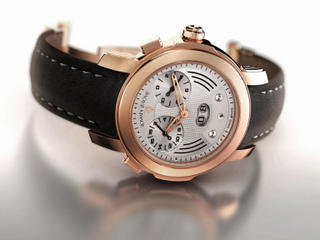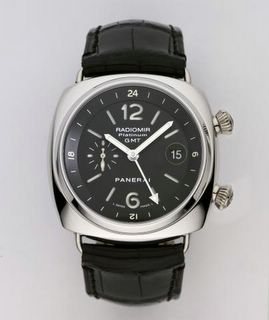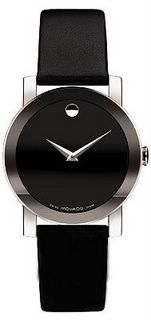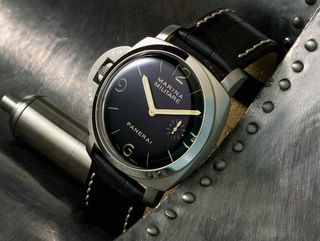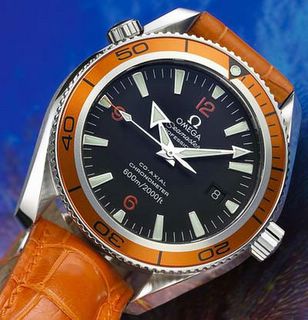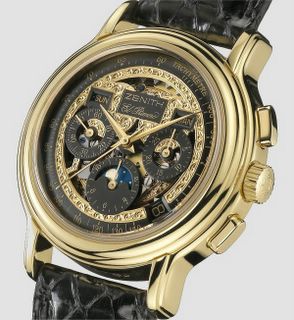Giuliano Mazzuoli Manometro Inspired directly by the technical instrument from which it takes its name, the Manometro is a new watch with a remarkable and affirmed design. Rigorously ‘Made in Italy’ but with Swiss component parts, it was launched recently on the Italian market. Already the Manometro has received strong interest in France (it can be found in Paris in the renowned store, ChronoPassion) and in the United States.Especially in Italy, the Manometro has now become a new ‘cult’ object, thanks to an extraordinary ‘word of mouth’ promotion that has strictly nothing to do with a company marketing campaign. Rather, the watch is being informally and unofficially promoted by a number of diverse celebrities from all walks of life who have acquired one and are wearing it in public. (These unofficial ambassadors of the Manometro range from pop musician Renato Zero to the new Fiat strong man, Lapo Elkann, the heir of the ‘Avvocato’ Gianni Agnelli who ordered a personalized version.) The fact that the watch appeared promptly in some of the most prestigious watch vitrines in the country, notably Pisa in Milan and Barozzi in Brescia, has also helped its popularity along.Its designer, Giuliano Mazzuoli, launched his Manometro without the support of a traditional advertising campaign. The product simply sold itself thanks to its originality and quality. Another major factor in its success is the reputation of its creator, as well as the very positive remarks made by opinion leaders and watch world gurus. For Giuliano Mazzuoli, an entrepreneur in his fifties from Tuscany, this is not the first venture of its kind. After having managed the family printing business, he moved into the design and production of everyday objects. The only thing missing was the watch. After his '3.6.5’ agenda (found notably on sale in the gift shop at the Museum of Modern Art in New York City) and the ‘Officina e Moka’ fountain pen (inspired by mechanics’ tools as well as the famous Italian coffee maker designed by Alfonso Bialetti), Mazzuoli finally turned his attention to the watch. “Actually, I have wanted to make a watch for a long time,” says Giuliano Mazzuoli, “but I didn’t want to make just another object, a watch that would be more or less like all the others on the market. I was going to give up on this idea when, one day, confronted with a water pressure problem at my house, I realized that the manometer was indicating a loss of pressure. The inspiration came to me immediately. This instrument, so simple and basic, this manometer, gave me the idea for the watch I wanted to create.” The result is a watch with a large case (it measures 45.2 millimeters in diameter and 14.8 millimeters in thickness) with a screw-in caseback held in place by eight screws, which is water-resistant to 5 atm. The crown is positioned at 2 o’clock. The dial goes straight to the essential, evoking the style of instrument gauges, providing high and immediate readability. The Manometro is made of stainless steel (Inox Aisi 316/L) and equipped with a very reliable automatic movement, the ETA 2824/2, with an Incabloc anti-shock system. The watches are entirely assembled in Italy.The dials are available in blue, black or ivory. Another of Mazzuoli’s original ideas is to do away with the horns. The leather strap is attached to the watch with metallic supports located under the case. This is a readily recognizable design feature that also eliminates the uncomfortable fold where the strap meets the case in a more traditional design that would result due to the rather considerable weight of the case. Right down to the smallest detail, the Manometro is a true 'design’ object.
Inspired directly by the technical instrument from which it takes its name, the Manometro is a new watch with a remarkable and affirmed design. Rigorously ‘Made in Italy’ but with Swiss component parts, it was launched recently on the Italian market. Already the Manometro has received strong interest in France (it can be found in Paris in the renowned store, ChronoPassion) and in the United States.Especially in Italy, the Manometro has now become a new ‘cult’ object, thanks to an extraordinary ‘word of mouth’ promotion that has strictly nothing to do with a company marketing campaign. Rather, the watch is being informally and unofficially promoted by a number of diverse celebrities from all walks of life who have acquired one and are wearing it in public. (These unofficial ambassadors of the Manometro range from pop musician Renato Zero to the new Fiat strong man, Lapo Elkann, the heir of the ‘Avvocato’ Gianni Agnelli who ordered a personalized version.) The fact that the watch appeared promptly in some of the most prestigious watch vitrines in the country, notably Pisa in Milan and Barozzi in Brescia, has also helped its popularity along.Its designer, Giuliano Mazzuoli, launched his Manometro without the support of a traditional advertising campaign. The product simply sold itself thanks to its originality and quality. Another major factor in its success is the reputation of its creator, as well as the very positive remarks made by opinion leaders and watch world gurus. For Giuliano Mazzuoli, an entrepreneur in his fifties from Tuscany, this is not the first venture of its kind. After having managed the family printing business, he moved into the design and production of everyday objects. The only thing missing was the watch. After his '3.6.5’ agenda (found notably on sale in the gift shop at the Museum of Modern Art in New York City) and the ‘Officina e Moka’ fountain pen (inspired by mechanics’ tools as well as the famous Italian coffee maker designed by Alfonso Bialetti), Mazzuoli finally turned his attention to the watch. “Actually, I have wanted to make a watch for a long time,” says Giuliano Mazzuoli, “but I didn’t want to make just another object, a watch that would be more or less like all the others on the market. I was going to give up on this idea when, one day, confronted with a water pressure problem at my house, I realized that the manometer was indicating a loss of pressure. The inspiration came to me immediately. This instrument, so simple and basic, this manometer, gave me the idea for the watch I wanted to create.” The result is a watch with a large case (it measures 45.2 millimeters in diameter and 14.8 millimeters in thickness) with a screw-in caseback held in place by eight screws, which is water-resistant to 5 atm. The crown is positioned at 2 o’clock. The dial goes straight to the essential, evoking the style of instrument gauges, providing high and immediate readability. The Manometro is made of stainless steel (Inox Aisi 316/L) and equipped with a very reliable automatic movement, the ETA 2824/2, with an Incabloc anti-shock system. The watches are entirely assembled in Italy.The dials are available in blue, black or ivory. Another of Mazzuoli’s original ideas is to do away with the horns. The leather strap is attached to the watch with metallic supports located under the case. This is a readily recognizable design feature that also eliminates the uncomfortable fold where the strap meets the case in a more traditional design that would result due to the rather considerable weight of the case. Right down to the smallest detail, the Manometro is a true 'design’ object.
http://www.giulianomazzuoli.com/Labels: Giuliano Mazzuoli

